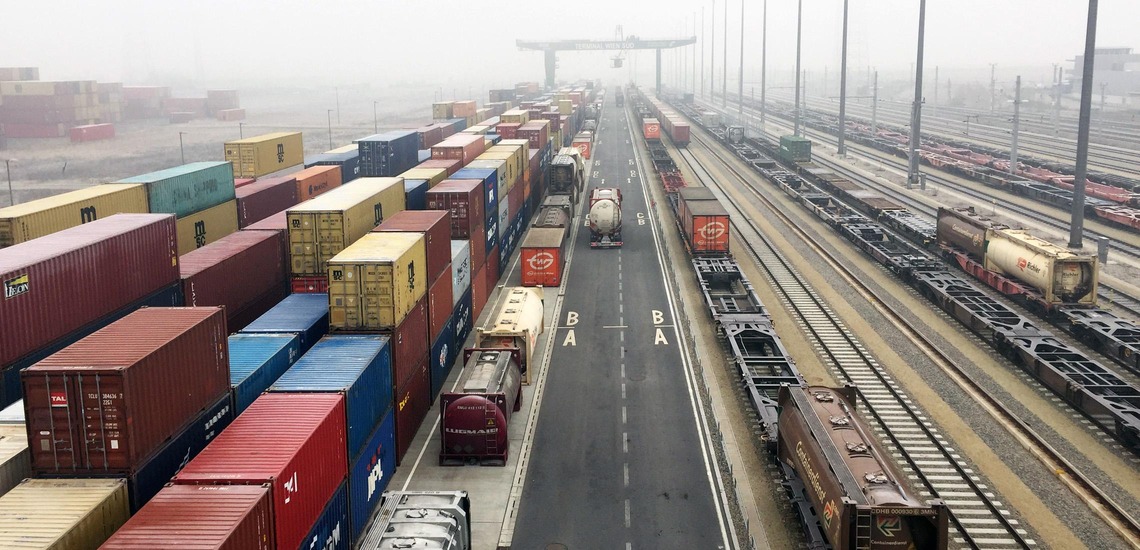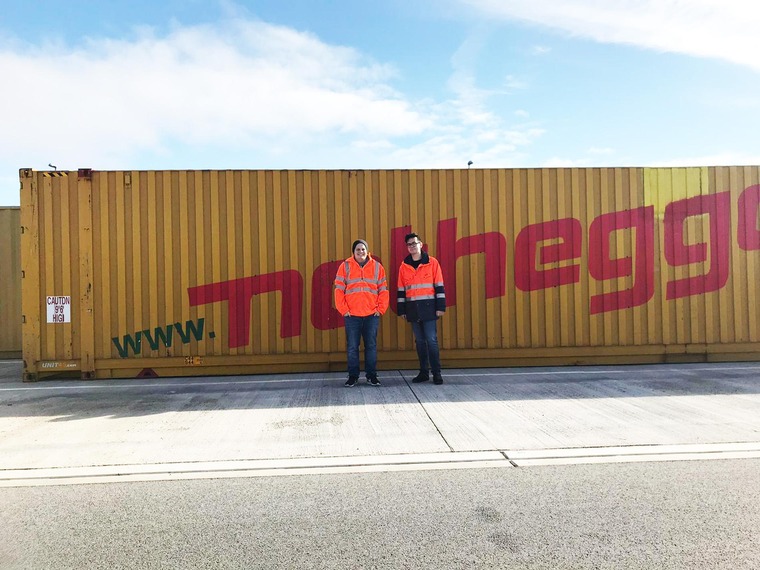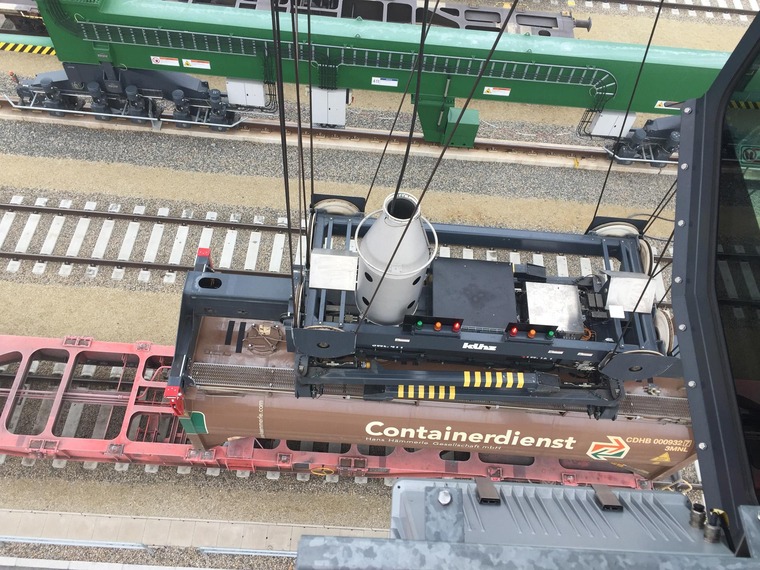RCG offers a well-founded apprenticeship in the field of forwarding and logistics. The apprentices change location every six months in order to learn as many tasks as possible and to be able to grasp the size of the company. By immersing themselves in areas close to our trains, the prospective forwarding merchants understand better how the process chain functions in detail. The activities at the container terminal in particular are exciting for a local inspection.
Vienna South Freight Centre
Our two apprentices Sebastian Rank and Mario Lenitz are already in their second year of training and are currently working at the Vienna South Freight Centre – an important transhipment centre for European rail freight traffic. The forwarding agents in charge learn there a lot about how to load and unload freight trains smoothly. For us, they have roughly sketched out the route the goods take in the container at the terminal.
Step 1 – Arrival and control
When a container arrives at the terminal by truck, it is checked for damage by the employees on site, because this is important for the later liability. Of course, this also applies to deliveries by ship to other terminals.
Step 2 – the container is registered
After the check, the colleagues record the container in the system and inform the truck driver where the container is to be taken. In the overview program, on which the entire terminal is shown, all employees can see that the delivered container has been recorded. “Many processes are automatic," says Sebastian Rank. "At the same time as the container is entered into the system, the electric lifting order is sent to the crane crew.”
Step 3 – the container is loaded
As soon as the truck driver has brought the container into the specified sector of the crane runway, the crane driver gets in action: He lifts the container onto the train and confirms the loading in the internal system.
Step 4 – Handling
After successful loading, the dispatcher prepares the freight documents for the outgoing trains. The containers and wagons are checked by the wagon master and the brake test is carried out. Then the journey of the goods in the container can continue. The goods are now transported by rail in an environmentally friendly way.
"The time at the terminal is great. I learn a lot about the basis of the railway system from seeing how the trains are handled and dispatched."
Sebastian Rank
"And we will be able to draw on the practical knowledge we are acquiring later – and it's worth an enormous amount."
Mario Lenitz
Apprenticeship at RCG
Are you perhaps also interested in an apprenticeship at Rail Cargo Group? You can find more information under karriere.oebb.at






